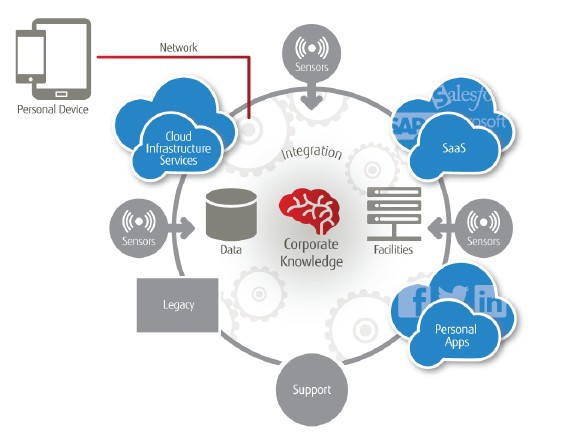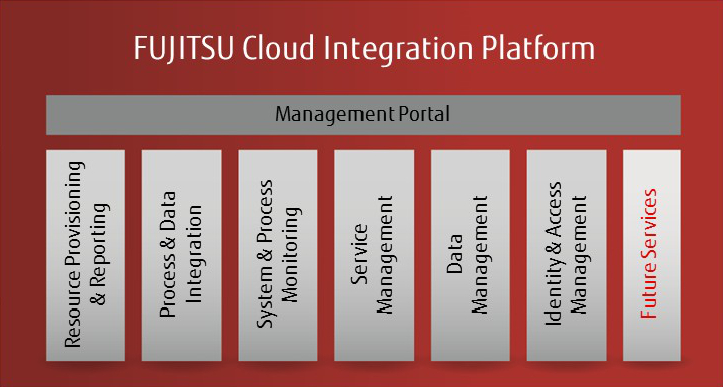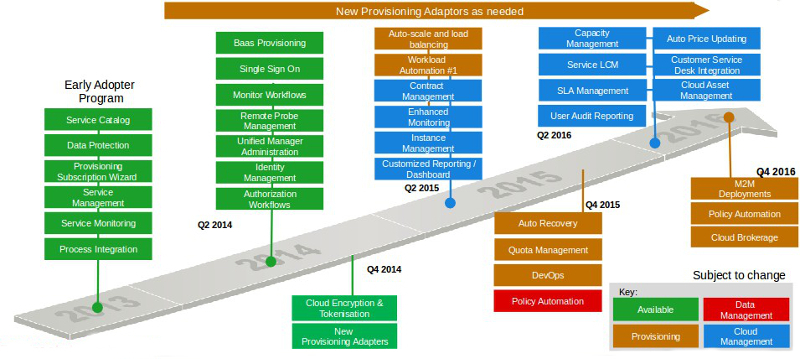All clouds in one window

We all know how difficult it is to choose one IT solution from the many existing on the market. This applies to everything - servers, printers, smartphones, tablets, as well as software products and services. Each option has its own advantages and disadvantages. In one case, the cost will be a clear advantage, but other parameters will remain at a minimum level. In another case, both the feature set and performance will be on top, but too high a price will cover all the pros. It also happens that all the characteristics will be at a “mediocre” level, but why do we need such a level if the business should strive forward all the time ahead of the competition? In a word, the ideal does not exist either in nature or on the market. The same situation is with cloud services.
It is worth noting that the interest of enterprises in cloud resources has long passed from a theoretical plane to a practical one, but at the same time, customers are interested, first of all, in integrated solutions that combine the capabilities of clouds - private, hybrid, as well as “home” company resources. All this complex economy needs a single “control panel”, which will make it possible to work with all resources, both cloudy and non-cloudy, with minimal costs and maximum convenience, flexibility and transparency. One such solution is the Fujitsu Cloud Integration Platform (FCIP) , which we would like to talk about today.
In fact, this platform allows businesses, similar to BYOD, to “bring their own cloud” to the company, while the IT service will not experience any difficulties or inconveniences, since managing this cloud will be just as familiar, transparent and secure , as well as other IT resources of the company. At the same time, FCIP is an incomplete “installed and forgot” boxed solution, namely a platform that includes a set of connectors to all common cloud solutions on the market. Clouds are a dynamic thing, constantly evolving and improving. Accordingly, the platform needs constant development and support.
What is the principle of FCIP? Organizations used to create their own private clouds from virtualized resources. This private cloud infrastructure needs flexible and transparent management. At the same time, this integration platform allows the customer to manage not only their own clouds, but also connect external clouds from third-party providers to them, such as, for example, Windows Azure, Amazon Web Services and others. Often there is such a situation when a virtualization platform from a specific manufacturer is introduced and successfully runs in your company, and you decide to purchase a solution on another platform with a different hypervisor. In this case, it is necessary to allocate resources for additional technical support and the purchase of new licenses. But over several platforms you can install a single “umbrella”, which will reduce them to a single interface, which ultimately will facilitate, simplify and reduce the cost of all management processes. Similar scenarios have long been implemented at the user level in the field of email. Any self-respecting modern mail service allows you to connect to your interface accounts from other mail services. Thus, you can fully use several mail services (send and receive mail from them) without leaving one.

What are the main components of FCIP? In addition to connectors to all known cloud and virtualization platforms, it includes a large number of different services - from those that are responsible for accepting applications to those that monitor the cloud infrastructure and applications.
When implementing FCIP in an organization, consulting plays an important role, which is an obligatory element of such projects, since the platform itself is a rather flexible and adaptive solution that needs to be integrated into the customer’s IT infrastructure, integrating with all of his cloud and virtual systems, and further develop as needed. This can be done as a customer himself, but most often companies whose IT is not the main activity do not have a large number of IT specialists in their staff, so Fujitsu itself can take on such support. In other words, when replenishing the customer’s IT infrastructure with a new cloud resource or a new virtualization platform, it is necessary to work on connecting them to FCIP.
It is important to note that FCIP allows you to not only manage the clouds, but also automate business processes. For example, link business processes with possible needs for IT infrastructure. In practice, this is as follows. The user sees a catalog of all corporate IT resources available to him and, if necessary, independently allocates the required volume without writing applications and trips to the IT department. At the same time, all permissions and approvals are performed by the platform automatically. And not only allocate, but also carry out all the necessary billing operations. Such scenarios are possible when a business process requiring processing in various environments, both cloud and non-cloud, will be automated, provided that all these environments are connected to FCIP. It is in the automation of business processes,
There are many accommodation options for FCIP. It can work in the customer’s data center, in the cloud, in the European data center, in the partner data center of Fujitsu, physically located in Russia, etc.

FCIP is still a completely new product on the market, and this applies to all countries, with the possible exception of Japan, where it appeared earlier. The number of projects to implement the platform in the West can be counted on the fingers of both hands. Let's talk about some of the most interesting and illustrative examples of using FCIP business. A large media company operating throughout Europe and with a large number of online media, is interested in transferring its information resources to a scalable platform with a “pay-per-use” model and at the same time is interested in a flexible cloud infrastructure that can quickly adapt to business needs. A US healthcare provider using a number of SaaS services from third-party providers, with the help of FIPS, solved the task of visualizing the management of individual components of its infrastructure.
Thus, FCIP helps, firstly, simplify the configuration of cloud environments for users who can connect new resources if necessary, however, all this will work in safe mode under the reliable control of FCIP. Secondly, IT professionals get a powerful tool for operational management of a hybrid IT environment, which includes unified tools for working with cloud and non-cloud resources. Moreover, all data is in complete safety. Finally, the company's IT director knows who uses the cloud resources in the company, how much he uses them, and how much it costs.
In conclusion, I would like to note the resources already supported by FCIP today. Now implemented with platforms such as Amazon WS, S5, Microsoft Windows Azure, SalesForce, Office 365, Google Apps Engine, Fujitsu Resource Orchestrator and VMware. The developers plan to implement support for Fujitsu Private Cloud and Hyper-V.
Russian IT specialists will be able to learn more about the capabilities of the Fujitsu Cloud Integration Platform and its application scenarios at the annual Fujitsu World Tour , which will be held in Moscow on September 15 this year .
